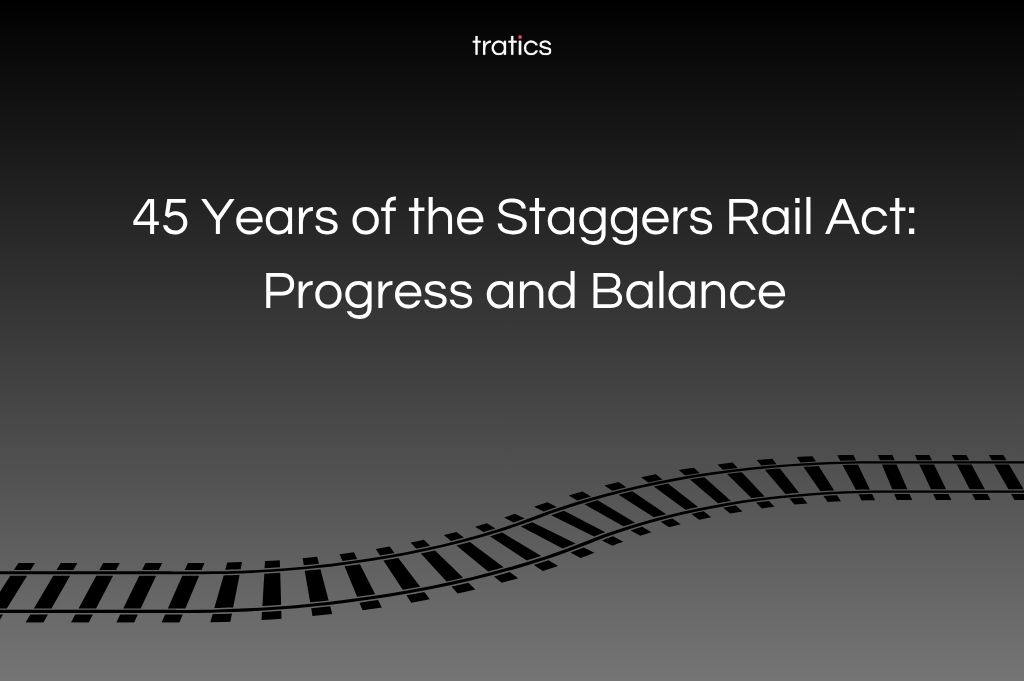The Promise of Deregulation: A Renaissance in the Freight Rail Industry
When the Staggers Act was enacted, American freight railroads were struggling. Heavy regulation had driven many railroads into bankruptcy, infrastructure was deteriorating, and shippers faced unreliable service.
Staggers changed that. By reducing regulations and embracing market-based principles, railroads gained the flexibility to reinvest in their networks, tailor contracts to customer needs, and pursue operational efficiency. The results were remarkable:
- According to the Association of American Railroads (AAR), freight rates (adjusted for inflation) fell by as much as 40% over the following decades.
- Safety improved dramatically, as modernized equipment and better management reduced accidents.
- Railroads reinvested hundreds of billions of dollars into their infrastructure — roughly $840 billion in nominal terms, or $1.4 trillion in today’s dollars — strengthening America’s supply chain and reducing dependence on public subsidies.
The Staggers Act proved that deregulation can yield extraordinary results. In deregulated environment, the government provides a framework but allows the market to function on its own.
The Other Side of the Track: Concentration and Rising Rates
However, over time, the benefits of deregulation have not been evenly distributed. While railroads regained financial health, the industry became increasingly consolidated. Four major rail carriers now dominate the market in North America, with the potential for newly proposed mergers leading to just two trans-continental railroads. This has led some shippers — particularly in agriculture, chemicals, and energy — to argue that competition has eroded.
As the number of Class I railroads declined, rate increases and service complaints grew. Some captive shippers, with access to only one rail carrier, reported limited bargaining power and rising costs since the early 2000s.
Moreover, service quality has fluctuated. Efforts like precision scheduled railroading (PSR) improved rail efficiency and costs, but often led to job cuts, reduced network redundancy, and slower responsiveness to customer needs. Critics argue that the spirit of the Staggers Act, that is flexibility and innovation, has in some cases given way to a narrow focus on ever lowering of railroad costs and increasing shareholder returns.
Finding Common Ground: Modernizing the Staggers Legacy
The enduring lesson of the Staggers Act is that balance matters. Regulation should safeguard competition, fairness, and access — not stifle innovation. Similarly, the market should reward efficiency and private investment — not allow monopolistic behavior.
As the STB considers the proposed merger between Union Pacific (UP) and Norfolk Southern (NS), and Congress turns to the next Surface Transportation Reauthorization, policymakers have an opportunity to update the Staggers framework for the 21st century. That means:
- Strengthening competitive access for shippers where practical.
- Incentivizing technological modernization and sustainability goals.
- Preserving the flexibility that has made rail one of the most productive freight systems in the world.
A forward-thinking policy that blends common sense and common ground can ensure America’s railroads remain strong, fair, and resilient for decades to come.
Forty-five years after Staggers, the U.S. freight rail system stands as both a success story and a work in progress. The Act rescued an industry on the brink and set the stage for private reinvestment and efficiency. But maybe the time has come to refine that model, thus ensuring that the next era of rail policy delivers not just profit, but high service levels paired with equity.
America’s railroads remain vital to the nation’s economy and climate goals. With balanced, modern policy, they can continue to deliver on both.

